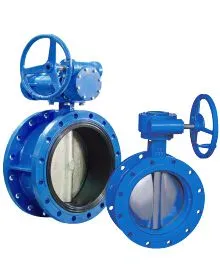4.
Pressure loss and flow capacity
Pressure loss and flow capacity essentially have the same parameters. The pressure loss is the measurement of the fluid resistance and is the difference between the valve's inlet pressure and outlet pressure. With the given flow, pressure losses are determined by structures of butterfly valves, shapes of butterfly valves' inner parts and surface roughness, and pressure losses are often indicated by the flow resistance coefficient. Flow capacity is related to maximum flow rates of
valves with the given pressure difference, which is usually indicated by the flow coefficient.
We should consider making valves' pressure loss smallest and flow capacity largest and we can take the general measures as the following.
①Valve bodies' channels should not have reducing designs; the channel should not have protruding parts; butterfly valves' plates should be smooth.
② Reduce values of flow channels' surface roughness as much as possible.
③ The cross section of the whole channel should be the same or adopt smooth structures.
5.
Driving torque
Driving modes of
butterfly valves can be electric modes, pneumatic modes, hydraulic modes, etc.
Output torque of driving devices is determined by input torque required by
butterfly valves; input torque of butterfly valves is affected by structures, degrees of sealing, types of media(water, oil, gas and powder), media's pressure, operating frequency(low frequency and high frequency), control modes and other factors.
6.
Media's sensitiveness
Butterfly valves are devices that close and open or regulate piping systems which are used for transporting water, oil, gas, solid-liquid two-phase and gas-solid two-phase flow various media; therefore, the sensitiveness of the butterfly valve's sealed auxiliary to the medium is one of the important factors to be considered when we design
butterfly valves; we should mainly consider selection of materials and structures when we design butterfly valves. We should choose rubber materials with good elasticity as seal rings for cut off butterfly valves whose media contain high dust content, or we can adopt multilayer metal seal rings with self-cleaning structures; sealed auxiliaries themselves can remove particles and other dirt when sealed auxiliaries have relative movements; we can use functions of purges and cleaning to ease dust pollution for sealed auxiliaries.
